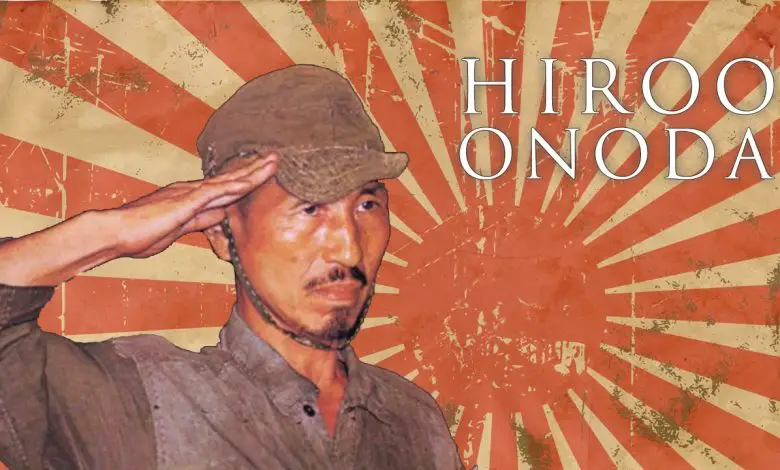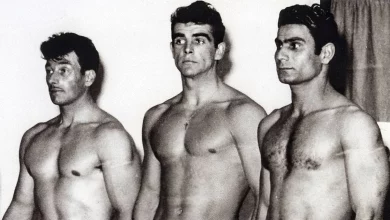What do you think our most major misconception about the ninja is?
The Incredible True Story of the Last Ninja

Step into the mysterious world of ninjas, where shadows hold secrets and legends intertwine with reality. Often misunderstood and misrepresented, ninjas have captivated our collective imagination for centuries. In this article, we embark on a journey to debunk misconceptions, shed light on their true nature, and explore the fascinating realm of these stealthy warriors.
From the popular belief that ninjas were ruthless assassins to the notion of their magical abilities, we delve into the multifaceted aspects of their existence. Prepare to discover the spiritual dimension of their training, the truth about their weapons, and the historical context that shaped their identity. Through the lens of Hiroo Onoda, a Japanese spy who became a symbol of the enduring ninja spirit, we unravel a tradition that defied stereotypes and xenophobic militarism.
Join us as we strip away the layers of mythology and delve into the reality of the ninja, exploring their principles, skills, and impact on Japanese history and beyond.
Key Takeaways:
- Ninjas were not solely assassins or killers; their training emphasized right-mindedness and had a significant spiritual dimension influenced by practices such as Shugendo.
- The weaponry associated with ninjas often involved innovative adaptations of common farm equipment, showcasing their resourcefulness and ability to adapt to their environment.
- While there are folk traditions of magical beliefs associated with ninjas, the manuals containing such practices emerged after the era of ninjas had passed.
- Hiroo Onoda, a Japanese WW II-era spy, exemplifies a different tradition in Japan that emphasizes liberalism, generosity, and non-xenophobia, which contrasts with the militarism typically associated with the country during that time.
Did ninja have special weapons?
When we explore the weaponry associated with ninjas, we encounter a surprising revelation. Many of the weapons displayed in ninja museums are adapted from farm equipment. These innovative adaptations allowed ninjas to employ common tools in ingenious ways, enabling them to navigate their environment and overcome obstacles. It is essential to note that most of the weaponry showcased in these museums is not authentic, as it was created long after the ninja became obsolete.
To gain a better understanding of the true essence of ninjas, let’s debunk another popular notion.
What about the tales of ninja as magicians?
Legends and folklore often intertwine with historical accounts, leading to misconceptions about ninjas as magicians. While there is a folk tradition in Japan that associates magical powers with certain writings on paper, it is crucial to differentiate between folklore and the actual practices of ninjas. The manuals that describe these magical beliefs emerged after the era of ninjas had passed, indicating a separate development from their authentic practices.
To shed light on the enduring legacy of ninjas, we can turn our attention to a remarkable figure from Japanese history.
Hiroo Onoda: The Last of the Ninja
Hiroo Onoda, a Japanese WW II-era spy, provides intriguing insights into the true nature of ninjas. Onoda’s story of survival in the Philippines for an astonishing 30 years reveals a tradition in Japan that starkly contrasts with the xenophobic militarism typically associated with the country during World War II. The Nakano Spy School, which emphasized liberalism, generosity, and non-xenophobia, aimed to instill the idea of bringing freedom to the peoples of Asia. However, the course of history took an unforeseen turn after the events of Pearl Harbor.
Despite the differing interpretations regarding Hiroo Onoda’s status as the last of the ninja, his existence exemplifies a distinctive tradition that has endured. His unwavering commitment to his mission and loyalty to his ideals demonstrate the essence of what it means to be a ninja, transcending conventional narratives.
In our quest to unravel the truth about ninjas, it is crucial to approach the subject from a holistic perspective. Exploring their spiritual dimension, innovative use of weaponry, and dispelling magical misconceptions helps us comprehend the rich tapestry of their history and legacy. As we delve deeper into the enigmatic world of ninjas, we discover that their true essence encompasses more than the stereotypes and legends that have proliferated over the years.
To further explore the fascinating realm of ninjas, you can visit the following websites:
Remember, the more we delve into the truth behind the ninja, the more we unravel the mystique that surrounds them, allowing us to appreciate their historical significance and enduring cultural impact.
FAQ: Frequently Asked Questions about Ninjas
1. What were the main principles guiding the training of ninjas?
The training of ninjas was guided by a set of core principles that encompassed physical, mental, and spiritual aspects. While the popular image of ninjas often focuses on their combat skills, their training went beyond mere physical prowess. Discipline, adaptability, stealth, and right-mindedness formed the foundation of their education. Ninjas cultivated a deep understanding of their surroundings, honing their ability to blend in seamlessly with their environment. Mental fortitude, quick thinking, and strategic planning were equally emphasized to ensure success in their missions. Additionally, spiritual practices, such as Shugendo, played a crucial role in nurturing their inner strength, harmony, and connection with the natural world.
2. Did ninjas exclusively use specialized weapons, or did they employ common tools as well?
While ninjas are often associated with exotic and specialized weaponry, such as shurikens (throwing stars) and katanas (Japanese swords), their resourcefulness extended beyond these conventional arms. Ninjas recognized the value of adapting and utilizing common tools for their advantage. They ingeniously repurposed everyday objects and farming equipment, such as sickles, scythes, and staffs, to serve as weapons or tools of deception. This approach allowed ninjas to blend in seamlessly with their surroundings, leveraging their environment to gain an upper hand. The ability to improvise and use readily available items showcased their ingenuity and adaptability in achieving their objectives.
3. What role did secrecy and disguise play in ninja operations?
Secrecy and disguise were paramount in ninja operations. Ninjas excelled at concealing their true identities, employing various techniques to blend into different social contexts. They would assume disguises ranging from humble peasants to high-ranking officials, enabling them to gather valuable intelligence or infiltrate enemy territory unnoticed. The art of disguise involved not only physical transformations but also adopting the mannerisms, dialects, and behaviors of the personas they assumed. Furthermore, ninjas employed covert communication methods, such as codes and secret symbols, to relay messages securely among their ranks. The mastery of secrecy and disguise allowed ninjas to operate covertly and effectively carry out their missions.
4. Were ninjas strictly mercenaries or did they have other roles in society?
While ninjas were renowned for their espionage and covert activities, their roles in society extended beyond being mere mercenaries. Ninjas often served as protectors of their communities and played essential roles in maintaining order and security. They acted as intelligence gatherers, not only for their own purposes but also for the benefit of their clans or lords. In times of war, they were entrusted with vital tasks such as scouting enemy positions, sabotaging enemy infrastructure, and relaying critical information to their superiors. Additionally, their expertise in unconventional warfare and guerrilla tactics made them valuable assets on the battlefield. Despite their secretive nature, ninjas were an integral part of the social fabric, contributing to the stability and defense of their communities.
5. How did the training and skills of ninjas differ from those of samurais?
Although both ninjas and samurais were prominent figures in feudal Japan, their training and skills differed in significant ways. While samurais adhered to a strict code of honor and engaged in open combat, ninjas specialized in covert operations and employed unconventional tactics. Ninjas focused on stealth, infiltration, and intelligence gathering, requiring them to develop skills in espionage, disguise, and subterfuge. In contrast, samurais honed their martial prowess and were bound by the code of bushido, emphasizing virtues such as loyalty, honor, and discipline. The training of ninjas was often more versatile and encompassed a broader range of skills beyond combat, reflecting their unique role in society.
6. Were there female ninjas, and what roles did they play?
Yes, there were female ninjas, often referred to as “kunoichi.” These skilled women played crucial roles in espionage, gathering intelligence, and executing covert missions. Female ninjas possessed qualities that made them well-suited for these tasks, such as their ability to navigate social settings unnoticed and exploit their perceived vulnerability. They would often assume disguises as maids, geishas, or servants, allowing them to access restricted areas and eavesdrop on conversations. Kunoichi were also adept at using seduction and charm as tools to extract information or manipulate targets. Their contributions were invaluable and demonstrated that the art of ninjutsu was not limited to a specific gender.
7. Did ninjas have any spiritual practices or beliefs?
Ninjas indeed had spiritual practices and beliefs intertwined with their training. Shugendo, a blend of Buddhism, Shintoism, and Taoism, held a significant influence on the spiritual dimension of ninjutsu. The practice of Shugendo involved connecting with nature, seeking enlightenment, and developing inner strength. Ninjas recognized the importance of balance and harmony in their physical and mental endeavors. Through meditation, breathing techniques, and rituals, they sought to cultivate a calm and focused mind, enabling them to navigate challenging situations with clarity and resilience. The integration of spiritual practices not only enhanced their physical abilities but also instilled a sense of purpose and connectedness to the world around them.
8. How were ninjas recruited, and what were the requirements to become one?
Ninjas were typically recruited from specific families or clans that specialized in the art of ninjutsu. These families passed down their knowledge and techniques from generation to generation, ensuring the preservation of their unique skills. Becoming a ninja required rigorous training and a commitment to honing a wide range of abilities. Physical fitness, agility, and endurance were essential prerequisites, as ninjas had to navigate treacherous terrains and execute complex maneuvers. Mental acuity, adaptability, and a capacity for strategic thinking were also crucial traits. Prospective ninjas underwent intensive training that encompassed combat techniques, stealth, disguise, espionage, and survival skills. The journey to becoming a ninja demanded unwavering dedication, discipline, and the ability to embrace secrecy.
9. Were ninjas strictly limited to Japan, or did their influence extend beyond its borders?
While ninjas originated in Japan and their legacy is deeply intertwined with Japanese history and culture, their influence extended beyond the country’s borders. The methods and techniques employed by ninjas were often shared with neighboring regions, such as China and Korea, through cultural exchanges and conflicts. These exchanges allowed for the cross-pollination of ideas, resulting in the evolution and diversification of covert practices across different regions. Additionally, in modern times, the fascination with ninjas has spread globally, inspiring popular culture, movies, literature, and martial arts practices worldwide. The enduring allure of ninjas resonates with people from various backgrounds, highlighting their universal appeal and cultural significance.
10. Did the existence of ninjas continue after the era of feudal Japan?
The era of feudal Japan marked the peak of ninjas’ prominence, but their existence did not abruptly cease with the changing times. While the traditional role of ninjas became less relevant in modern society, their legacy endured in various forms. Some families and lineages preserved the knowledge and techniques of ninjutsu, ensuring its transmission to future generations. Additionally, the ideals and principles underlying the ninja’s training, such as adaptability, discipline, and strategic thinking, continue to influence various fields, including martial arts, espionage, and even business strategies. The spirit of the ninja lives on, resonating with individuals seeking personal growth, resilience, and the pursuit of excellence in their chosen paths.
Conclusion:
As we conclude our exploration of the enigmatic world of ninjas, we find ourselves immersed in a tapestry of truth, fiction, and cultural significance. Beyond the popular imagery of assassins and magicians, ninjas were skilled operatives who possessed a unique set of abilities and principles.
Dispelling the misconceptions, we discover the deep-rooted spirituality woven into their training, the ingenuity behind their weapon adaptations, and the reality behind magical folklore. The legacy of ninjas extends beyond their historical era, permeating our understanding of resilience, adaptability, and the pursuit of harmony.
In the remarkable figure of Hiroo Onoda, we witness the embodiment of a tradition that preserved the values of liberalism, generosity, and non-xenophobia, defying the stereotypes associated with Japan’s wartime militarism. While Hiroo Onoda may be considered by some as the last of the ninja, his existence serves as a testament to a timeless spirit that transcends cultural boundaries.
As we unravel the enigma of ninjas, let us embrace the lessons they teach us: the importance of discipline, the power of adaptability, and the significance of the human spirit in the face of adversity. The legacy of the ninja endures, inviting us to contemplate the hidden strengths that lie within us all.









